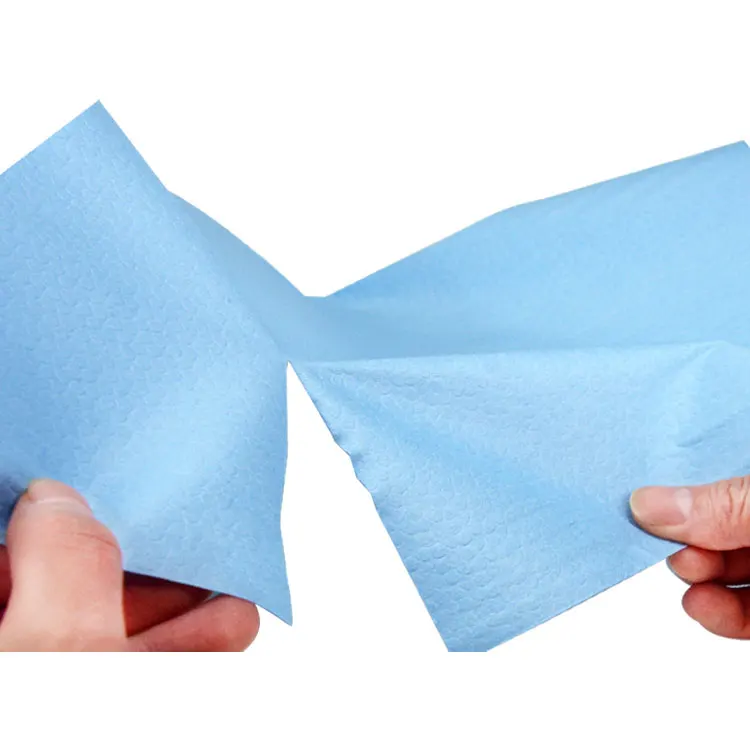Manufacturing Processes: Clean Paper vs. Standard Paper
Raw Material Selection Differences
Manufacturing clean paper starts with careful selection of raw materials, specifically virgin pulps from sustainably managed forests. This approach not only ensures quality but also supports environmental preservation by avoiding deforestation and maintaining ecological balance. On the other hand, standard paper often includes recycled materials, which can be cost-effective but introduce impurities. These impurities can affect the overall product quality, leading to challenges in maintaining cleanliness and purity. Therefore, selecting the right raw materials is crucial for clean paper, where the focus is on delivering a product with high cleanliness standards, free from contaminants.
Production Techniques for Reduced Contaminants
To manufacture clean paper, producers utilize sophisticated production techniques aimed at minimizing contaminants like dust and chemicals. Methods like closed-loop water systems and advanced filtration processes play a pivotal role. These techniques ensure that every step of production is controlled to reduce external pollutants, thereby upholding the integrity of the paper’s cleanliness. Conversely, standard paper production generally lacks these stringent methods, leading to a greater susceptibility to contaminants. Consequently, products may vary in purity, offering a compromise between cost and quality. Emphasizing these advanced techniques is essential for clean paper manufacturers to meet high standards in cleanliness and environmental responsibility.
Material Composition and Surface Properties
Fiber Purity in Clean Paper
Clean paper is characterized by its higher fiber purity, which is crucial for achieving excellent print quality and firm adhesion. This purity level ensures that the paper is free from dust and debris, enhancing its usability in various applications. Higher fiber purity plays a pivotal role in minimizing wear on printing equipment, as supported by several studies. Clean paper's refined composition makes it a preferred choice for industries seeking to maintain high standards of cleanliness and print clarity.
Mineral Fillers in Standard Sheets
Standard sheets often include mineral fillers that enhance opacity but might compromise surface smoothness. These excess fillers can lead to inconsistencies, affecting the quality of printed materials. While fillers contribute to certain desirable properties, their overuse can result in unwanted surface roughness. In contrast, clean paper employs minimal to no fillers, significantly improving its surface properties. This composition ensures smoother surfaces and better performance, especially in high-quality print jobs.
pH Neutrality & Ionic Contamination Risks
Maintaining pH neutrality in clean paper is essential to reducing the risk of degradation over time, thus ensuring a longer shelf-life for the material. Unlike clean paper, standard paper can have varying pH levels, which may lead to chemical reactions and unintended deterioration. Research underscores the importance of neutral pH levels in preserving the quality and integrity of paper. By minimizing the risks of ionic contamination, clean paper provides a stable and reliable medium for both industrial and consumer use.
Contamination Control Mechanisms
Micro-Fiber Shedding in Standard Paper
Standard paper often faces issues with micro-fiber shedding, which can compromise cleanliness in sensitive environments like laboratories and hospitals. This shedding introduces tiny particles that could contaminate spaces where maintaining a sterile environment is essential. For businesses operating in clean room settings, understanding these risks and choosing appropriate paper types is paramount to prevent contamination.

Dust-Free Guarantees for Clean Paper
Manufacturers of clean paper commonly offer dust-free guarantees, ensuring minimal contaminants in their products. Rigorous testing protocols are applied to verify the absence of dust particles, contributing to reduced maintenance costs for machinery, and ultimately enhancing product quality. Using clean paper not only ensures better adhesion and print clarity but also significantly cuts down on the need for cleaning and repair services due to machinery wear.
Silicon-Free Sizing Applications
Clean paper often utilizes silicon-free sizing applications to enhance the finish and extend environmental benefits. Unlike standard papers that may incorporate silicone-based sizing, which carries risks of unintended chemical reactions, clean paper integrates silicon-free solutions that effectively control contamination. This approach is vital for achieving higher cleanliness standards while simultaneously minimizing environmental impact.
Industry Standards and Certification Requirements
ISO 14644 Particle Count Mandates
ISO 14644 is a critical standard that governs cleanliness protocols in controlled environments, and it's particularly relevant for producers of clean paper. This standard mandates strict particle count limits to ensure the quality and safety of materials used in sensitive applications. Companies that manufacture clean paper must rigorously adhere to these limits to maintain their certification and assure customers of the paper's compliance with necessary quality benchmarks. By following ISO 14644 standards, manufacturers instill confidence that their clean paper meets stringent requirements, thereby supporting industries that demand superior cleanliness and particulate control.
Absence of Testing Protocols for Standard Paper
Standard paper often suffers from a lack of established testing protocols, leading to unpredictability in its quality and performance. Unlike clean paper, standard paper does not have stringent testing requirements, which can result in inconsistencies and risks for those who utilize it in environments where quality is critical. This gap in standardized testing highlights the need for more rigorous evaluations and certifications in the production process of standard sheets. Enhanced testing protocols for standard paper could mitigate these risks and provide greater assurance to end-users regarding its quality and reliability.
Packaging and Storage Protocols
Vacuum-Sealed Poly-Wrapping for Sterility
Vacuum-sealed poly-wrapping is crucial for maintaining the sterility of clean paper. This advanced packaging method effectively shields the clean paper from environmental pollutants and potential contaminants, ensuring the product remains uncontaminated. By adhering to vacuum-sealed packaging practices, industries align with stringent cleanliness standards necessary for sensitive applications, such as in laboratories and healthcare settings. Such packaging not only extends the shelf life of clean paper but also guarantees that it retains its quality until it reaches the end-user.
Conventional Storage Risks in Standard Stock
The conventional storage methods often employed for standard paper come with inherent risks that can compromise the paper’s quality. Exposure to moisture and dust due to non-sterile environments can lead to the degradation of the paper. These risk factors highlight the importance of adequate storage practices where standard paper is concerned. It's imperative that businesses looking to maintain acceptable usage standards for their paper consider adopting more rigorous storage protocols to prevent such contamination and ensure the consistency and reliability of their paper products.
FAQ Section
What is the difference between clean paper and standard paper?
Clean paper is manufactured using virgin pulps and sophisticated techniques to minimize contaminants, whereas standard paper often involves recycled materials and lacks strict production methods.
Why is fiber purity important in clean paper?
Higher fiber purity ensures better print quality and reduces wear on printing equipment, making clean paper preferred for high standards.
How is clean paper stored to maintain sterility?
Clean paper is vacuum-sealed in poly-wrapping to protect against environmental pollutants and extend its shelf-life.
What are the benefits of silicon-free sizing applications in clean paper?
Using silicon-free solutions reduces contamination risks and enhances environmental responsibility while maintaining high cleanliness standards.




